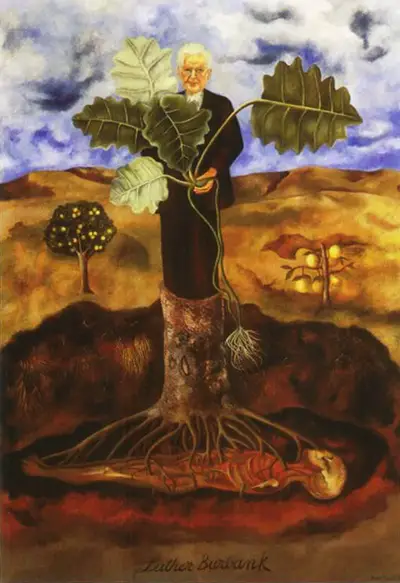This portrait demonstrates just one of his many experiments; he is depicted as half man, half tree. Kahlo wanted to show the duality of life and death in this work. Burbank is shown both above ground as well as being a corpse underneath. In the former, he is the tree, surrounded by vibrant blues and greens. In the latter, he is shown as a decaying cadaver underground acting as the roots of the tree. Together, he is alive thanks to the roots feeding him from below and he symbolises that life and death are intertwined and connected to one another.
The meaning of this portrait is clear. Man requires nourishment from the earth just as it claims us back in the end, where in a sense, the earth feeds on the dead so that it can in turn provide life. As above, so below. Note the plants found in the landscape as well as in the hand of Luther Burbank. These represent his passions in life and are amongst his many experiments. This painting is quite similar to Frida Kahlo's other works in that it combines vibrant use of colour with surreal or bizarre dualities. Standing in contrast to the earthy tones used in the rest of the painting is Luther Burbank himself in a black suit. This focusses attention to the centre of the painting, where the focal point is Burbank as the trunk of the tree.
The above ground half uses bright blues and greens and is full of life. This blends halfway through the portrait where we see below ground and are introduced to the cadaver. We now see more dark and sombre colours, which contrast starkly to the lively sky and above ground scenery. Painted in 1931 in San Francisco, the portrait of Luther Burbank can now be found in the Museo Dolores Olmedo in Mexico. The medium is oil on masonite.

